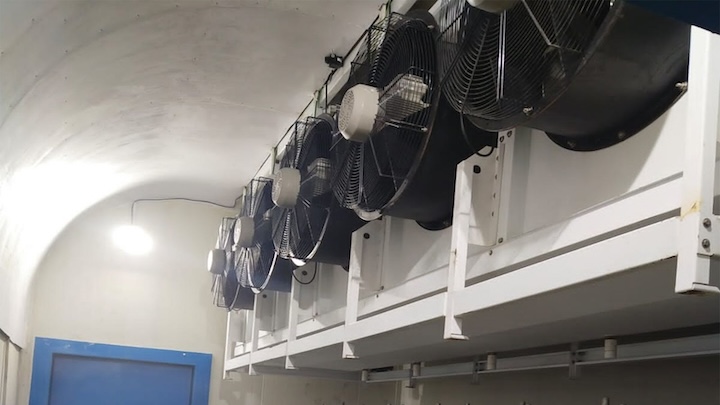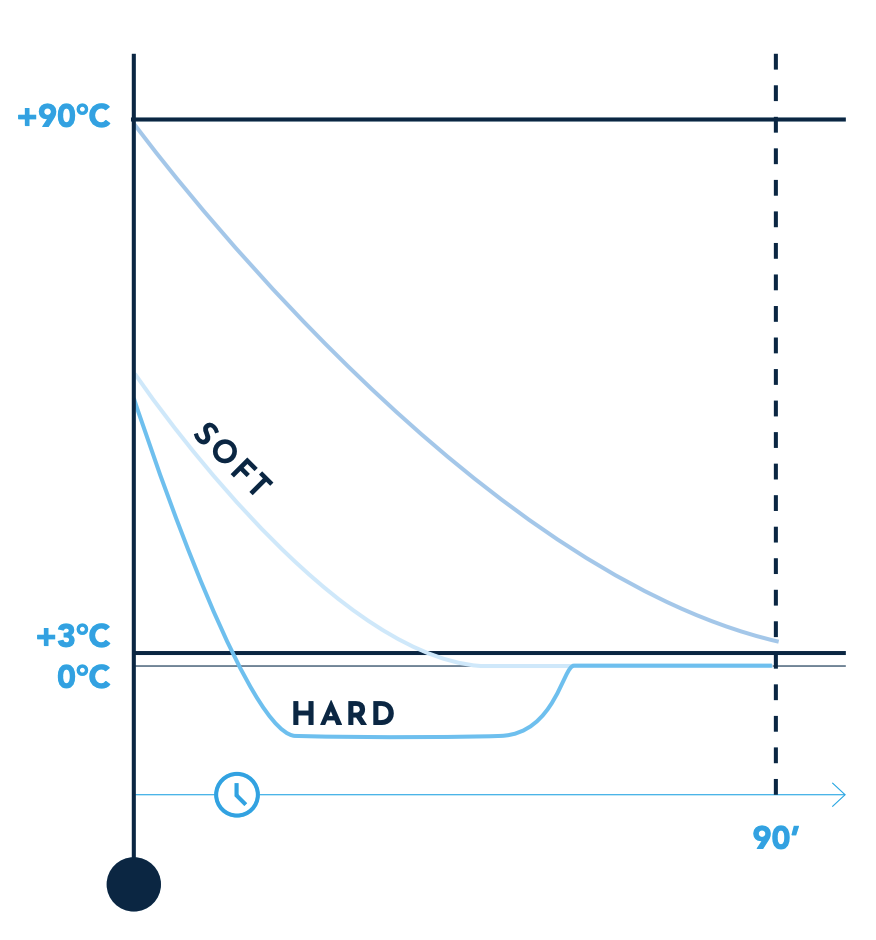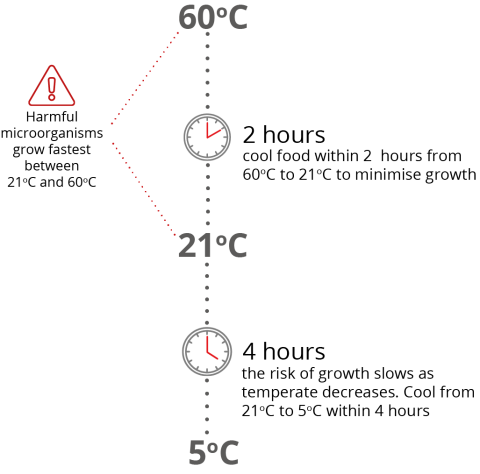5 Essential Factors To Your Blast Chiller Design For Ultimate Efficiency
Designing an efficient blast chiller system involves more than lowering temperatures and increase air flow. By strategically planning around these five essential factors, you can boost energy efficiency and ensure quality product.

1. Time is of the essence
Rapid cooling is crucial for food safety, aligning with standards set by Food Standards Australia and New Zealand (FSANZ). According to these guidelines, potentially hazardous foods must cool from 60°C to 21°C within 2 hours and then from 21°C to 5°C or colder within an additional 4 hours. We recommend chilling food products directly from oven temperatures of around 90°C to 3°C within 90 minutes to effectively halt bacterial growth and preserve food integrity.
When designing a blast chiller, accurately calculating the required cooling capacity is paramount. Considering several essential variables:
- Product Heat Loads: Assessing both sensible (temperature reduction) and latent (moisture removal) heat is necessary to achieve targeted temperatures within mandated timeframes.
- Packaging and Container Materials: Materials can insulate and impact heat transfer rates, directly influencing cooling efficiency and duration.
- Ambient Facility Temperature: Elevated environmental temperatures increase the overall heat load, requiring adjustments to refrigeration capacity.
Blast chiller with precise control systems is also essential to optimise cooling processes. Soft chilling is ideal for delicate or thin products (e.g., pastries, fish, pasta), ensuring gradual temperature reduction without compromising structural integrity. Conversely, hard chilling aggressively reduces temperatures, making it suitable for thicker or denser items (e.g., vacuum-packed meats, broths, sauces).

By precisely integrating these cooling methodologies, your design can confidently meet stringent FSANZ safety regulations, maintain high food quality, and optimise operational efficiency.
2. Air Distribution and Velocity
Effective air distribution and velocity are critical components in blast chiller design, directly impacting the chilling rate and uniformity of product temperature reduction. Maintaining air velocities between 2.5 to 4.0 m/s around the food products is essential. This range ensures rapid heat extraction without compromising the product’s structural integrity or drying it out excessively.
TIESA underscores the importance of using electronic fans with indirect airflow directed toward products, promoting even temperature distribution throughout the chiller. Strategic placement of fans and carefully designed airflow pathways eliminate hot spots and prevent uneven chilling, thereby enhancing food safety and product quality.
Additionally, the arrangement of food items within the blast chiller should ensure adequate space for airflow circulation, avoiding overcrowding. The optimal spacing allows uniform exposure of food products to cold air, ensuring consistency in the cooling process and maximising energy efficiency. Proper airflow management not only improves operational effectiveness but also contributes to extending the shelf-life and maintaining the sensory qualities of the chilled products.
3. Recipe-Specific Air Temperature Setpoints
Different recipes and food products require specific chilling profiles to optimise quality and efficiency. Utilising recipe-specific air temperature setpoints can provide considerable energy savings and prevent unnecessarily aggressive cooling. By programming tailored setpoints for each recipe, you can avoid overly hard cooling that may negatively impact the texture and quality of delicate products. Precise, programmable controls that allow custom air temperature setpoints for each product type significantly enhance both energy efficiency and food quality.
4. Ice Formation Mitigation
Mitigating ice formation is critical for blast chiller efficiency and safety. According to ASHRAE, preventing ice buildup involves managing defrost cycles effectively, maintaining adequate evaporator surface temperatures, and ensuring proper air circulation. Regular defrosting schedules and intelligent defrost control systems can significantly reduce ice accumulation, minimising downtime and maintaining consistent chilling performance.
Air infiltration and subsequent water loss during chilling can exacerbate ice formation within the chiller. Excessive air infiltration leads to moisture evaporation, increasing the likelihood of ice formation on evaporator coils and within the unit itself. Sealing products before cooling minimises air exposure, reduces moisture loss, and prevents excessive ice buildup. Effective sealing methods, such as vacuum packing or wrapping products securely, significantly improve blast chiller performance by controlling humidity and maintaining optimal operating conditions.
5. Energy Efficiency and Variable Load Management
Blast chillers consume considerable energy; thus, optimising their efficiency is critical. Blast chillers typically experience high refrigeration loads at the beginning of the chilling process and significantly lower loads toward the end. This variable load profile necessitates the use of variable speed drives (VSDs) on compressors and evaporator fans. VSDs adjust the speed and capacity based on the real-time cooling demands, significantly reducing energy consumption and operating costs while maintaining precise temperature control.
Contact TIESA for Expert Blast Chiller Design Solutions
For expert guidance on designing or optimising your blast chiller system, contact TIESA. Our team specialises in creating energy-smart, efficient refrigeration solutions tailored to your specific needs. We’re here to help your operations stay cool, reliable, and cost-effective. Reach out to discuss how we can support your project!

